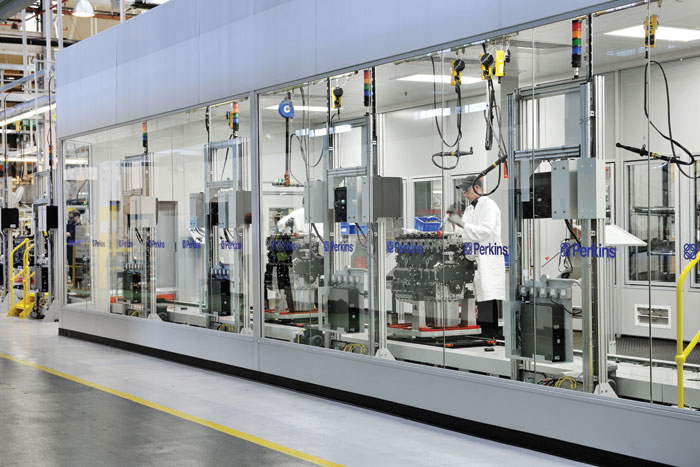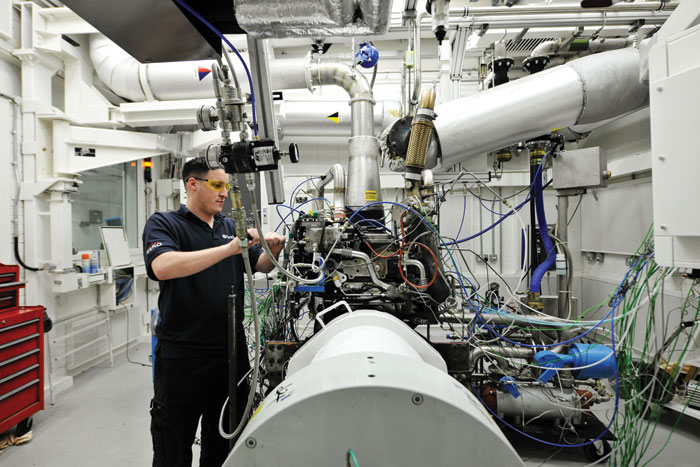Productivity Up, Emissions Down
There can certainly be little argument that nothing in the last decade has concentrated the minds of diesel engine manufacturers more than the implementation of emissions regulations. The challenge of meeting these new emission standards has created many innovative solutions that have delivered gains previously thought not possible. Indeed by 2015, when the Final reduction is imposed, particulate matter and NOx at the tail pipe will be at near zero levels, a fraction of the levels required at Stage IIIA/Tier 3.

Approaches for meeting emission standards need to be balanced with the important issues of performance and productivity, durability and robustness, cost of ownership and residual values.
That is why, at Perkins, our focus has been as much on the customer as it’s been on emissions. In fact, one could say that we have used emissions regulations as an opportunity to establish new OEM-driven benchmarks in terms of engine performance, productivity and refinement.
The above factors have influenced the technology paths that engine manufacturers like ourselves have taken. As always with new regulations, there are different ways of achieving the required results. As mentioned earlier, levels of NOx will be further reduced in the coming years. Manufacturers such as Perkins are trying to ensure that our customers receive the most robust products and lowest operating and ownership costs.
January 2013 will be the last planned change for engines up to 75 hp (56 kW) and January 2015 will be the final stage for engines between 75 and 175 hp (56 and 130 kW).
At this time, the introduction of selective catalytic reduction (SCR) technology will reduce the NOx in the exhaust to levels never thought possible a few years ago. This is a different type of catalytic device that uses diesel exhaust fluid (DEF). By 2015, SCR systems will be on their third generation and will have significantly moved on in terms of efficiencies and reliability.
While SCR systems will introduce another consumable fluid into the system and require a separate tank, there is an upside over and above the reduction in NOx. The introduction of this technology will enable us to make another significant reduction in base engine fuel consumption which will be more than enough to compensate for the DEF consumed. As an example, our latest six-cylinder engine, the 1206F, delivers an estimated 5 percent better cycle fluid consumption over previous models, allowing the end-user to get more done, faster and with lower operating cost. This will be good news for owners and operators since diesel fuel is likely to be more expensive than DEF by 2015.
What happens beyond 2015 is still uncertain. Most regulators and the people in our industry believe that we have contributed as much as technologically as possible to the improvement in our air quality.
The most compelling need is to improve machine fuel consumption. Very significant improvements have been made on larger machines. For smaller machines we see increasing economic viability of energy recovery systems.
European regulation generally aligns with that in the United States, with the exception of a small group of engines between 25.5 and 49.5 hp (19 and 37 kW), where the previous regulations will remain in force.

Dan Clayton is a Tier 4 product marketing manager for Perkins, based in Peterborough, U.K.
Fuel for Thought
Perkins Answers Five Important Questions to Catch Up on New Tier 4 Fuel Requirements
1. Why is ultra low sulphur fuel (ULSF) required for new Tier 4 engines? Why is such a specific fuel needed?
EPA regulations require refiners to produce ULSF. The reduced levels of sulphur in this fuel help non-road diesel engines meet the emission limits for particulate matter, which is further reduced through the use of diesel particulate filters (DPFs).
2. Does using a Tier 4 engine mean buying a new fuel tank? What is the problem with using old systems?
The key concern with using old tanks is the dilution with higher-sulphur fuel in the storage tank. Purging tanks and lines of the higher-sulphur fuel is essential, along with the removal of the water and residue that sits at the bottom of many diesel fuel storage tanks.
3. What requirements are imperative when buying a new ULSF distribution tank or updating a service truck?
The same storage requirements exist for ULSF as for other diesels with higher-sulphur content. There are no additional temperature or material concerns. Fuel nozzles are the same as those used today on higher-sulphur fuel.
4. Are Tier 4 engines more susceptible to dirt and water in the fuel? Why?
The Tier 4 technology itself is no more sensitive than the Tier 3 technology. The key area is around modern fuel injection equipment which, whilst significantly more durable than anything seen before, does require clean fuel. Our filtration systems give all of the control required for normal use, but will, over a matter of time start to clog if subjected to very high levels of debris. We are actively encouraging operators to use their common sense in the maintenance of their storage systems and use genuine engine manufacturers’ filters.
5. The standard engine oil has also changed for Tier 4 engines. What oil should be used?
Additives in older diesel engine oil blends have helped preserve an engine’s life, but are also the main source of the ash that will build up in a DPF. Specific oils have been blended especially for use in engines that use DPF technology. These oils are low in ash forming chemicals and preserve the full service life of a DPF; these oils are also compatible with Perkins previous engine Tiers, so the dealer need only keep one type of oil, thereby reducing cost.
